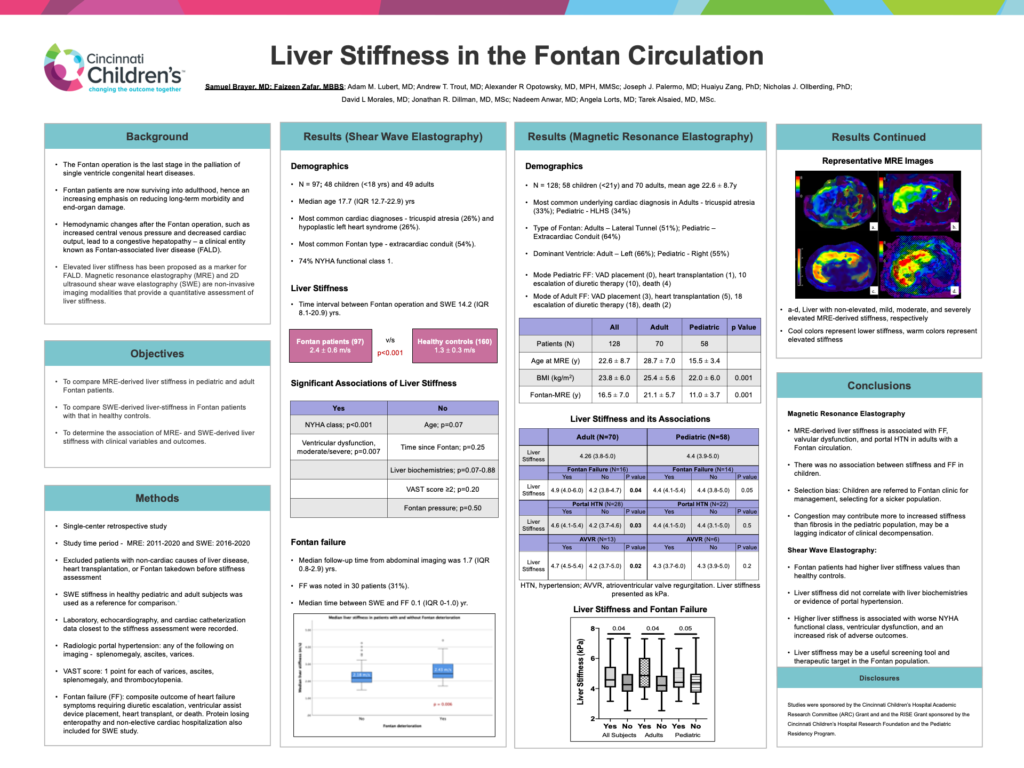Relation of Magnetic Resonance Elastography to Fontan Failure in a Cohort of Pediatric and Adult Patients
Samuel W. Brayer, MD; Faizeen Zafar, MBBS; Adam M. Lubert, MD; Andrew T. Trout, MD; Joseph J. Palermo, MD, PhD; Alexander R. Opotowsky, MD; Angela Lorts, MD; Nadeem Anwar, MD; Jonathan R. Dillman, MD, MSc; Tarek Alsaied, MD, MSc

As patients with Fontan circulation age into adulthood, monitoring for liver disease with novel imaging modalities can help drive treatment and preventative strategies.
-Sam Brayer, MD & Faizeen Zafar, MBBS
Abstract
Background: With increased life expectancy, adverse effects of Fontan associated liver disease are increasingly recognized. Elevated magnetic resonance elastography (MRE)-derived liver stiffness is associated with worse outcomes in adults with Fontan circulation.
Objective: We sought to evaluate if the association between stiffness and outcomes was present in pediatric patients.
Methods: Single center retrospective study of adults and children (<21 years) with Fontan circulation who underwent MRE between 2011-2020. Fontan failure (FF) was defined as any of the following: death, transplantation, ventricular assistive device, heart failure symptoms requiring escalation of diuretics. Radiologic portal hypertension was defined as any of the following: splenomegaly, ascites, varices.
Results: 128 patients were included, aged 22.6±8.7 years. 59 (46%) were children. Median liver stiffness was 4.3 kPa (IQR: 3.8-5.8) for the entire cohort. 30 patients (23%) had FF (16 adults, 14 children). Liver stiffness was higher in all patients and in adults with FF compared to those without FF (4.8±1.1 vs. 4.4±0.9 kPa, p=0.04, 5.0±1.2 vs. 4.3±0.9 kPa, p=0.03, respectively). There was no difference in liver stiffness between children with and without FF (4.7±1.0 vs. 4.5±1.0, p=0.5). Adults with radiologic portal hypertension had higher liver stiffness than adults without (4.8±1.1 vs. 4.2±0.9, p=0.02). Adults with moderate/severe atrioventricular valve regurgitation (AVVR) had higher liver stiffness than those without (5.0±0.8 vs. 4.4±1.0, p=0.02). No difference was observed in either comparison in children.